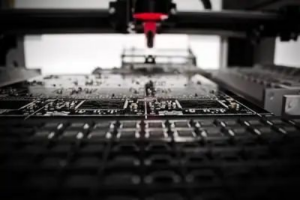Overview of PCB Surface Treatment Processes
Introduce the importance of PCB surface treatment in electronic manufacturing, as well as its influence on the performance and reliability of PCBs.

The importance of PCB surface treatment
In electronic manufacturing, PCB surface treatment is of vital importance. It not only protects the PCB from the influence of the external environment such as oxidation and corrosion but also provides a solderable surface for components to ensure good soldering quality. Different surface treatment processes have varying degrees of influence on the performance and reliability of PCBs. For example, the electroless nickel immersion gold (ENIG) process can provide good conductivity and corrosion resistance, effectively protecting the PCB and achieving good electrical performance; while the organic solderability preservative (OSP) treatment, although cost-effective, may reduce its solderability after long-term storage. In conclusion, choosing the appropriate surface treatment process is the key to ensuring the quality and reliability of PCBs.
Detailed Explanation of Common Surface Treatment Processes
Tin Plating (HASL)
Tin plating (HASL) is a common PCB surface treatment method. It involves immersing the PCB in molten solder and then using pressurized hot air to scrape off the excess tin and lead to form a tin coating.
Its advantage is that it can provide good solderability. Tin has a low melting point and good fluidity, can quickly melt and combine with the solder to form a firm solder joint, and can also prevent the oxidation of the bare copper surface, maintaining the conductivity and solderability of the PCB.
However, with the increasing demand for high-density PCBs, its use is gradually decreasing. Because the effect of hot air can cause uneven distribution of tin on the PCB surface, especially between fine solder pads and lines. This unevenness can affect the soldering quality and reliability, and this process may produce tin dross and residues, which are prone to causing electrical problems such as short circuits.
Electroless Nickel Immersion Gold (ENIG)
The electroless nickel immersion gold process is to deposit a nickel layer on the PCB surface first and then plate a thin gold layer.
It has many advantages. The nickel layer is corrosion-resistant, can prevent the oxidation of the copper surface, and improve the mechanical strength of the PCB. The gold layer has excellent electrical conductivity and oxidation resistance, can ensure electrical performance and maintain surface stability for a long time, and enables the PCB to maintain good soldering performance and reliability during long-term use. The combination of the nickel and gold layers is firm and has long-term stability. It also has good solderability and can still be maintained after long-term storage.
However, its disadvantages also exist. The process cost is high due to the use of precious metal gold and complex chemical treatment. The “black pad” problem may occur, that is, the corrosion of the nickel layer produces black spots that affect the appearance and performance. In high-frequency applications, the conductivity of the nickel layer is not as good as that of copper, which will lead to a slower signal transmission speed.
Overall, the electroless nickel immersion gold process is suitable for high-end electronic products, but attention should be paid to the cost and problems such as “black pads”.
Organic Solderability Preservative (OSP)
The organic solderability preservative (OSP) is to coat an organic compound on the bare copper surface to prevent the oxidation of the copper surface.
Its advantages lie in being environmentally friendly and having high cost-effectiveness, and is suitable for PCB manufacturing projects that are sensitive to costs.
However, the treated PCB needs to be stored under stricter conditions because its “protective film” is vulnerable to acids and moisture. When used for secondary reflow soldering, it needs to be completed within a certain time. If the storage exceeds three months, reprocessing is required. But it is widely used in the production of low to medium complexity PCBs.
We understand the importance of PCBs to electronic products and will continue to research and develop and optimize the processes to provide support for the development of the electronic industry with high-quality services. If you have any needs regarding PCB production, please feel free to contact us at any time.
